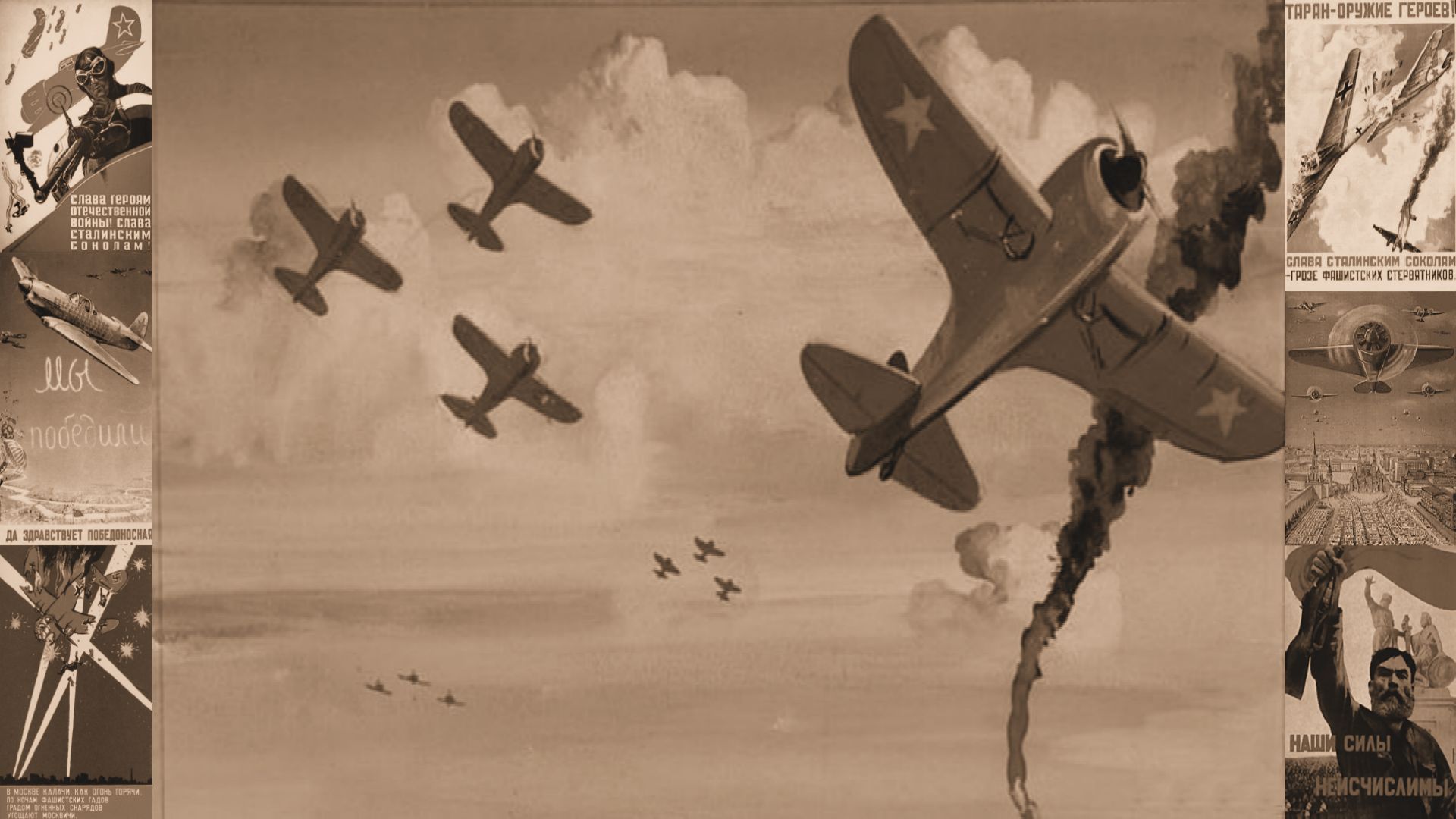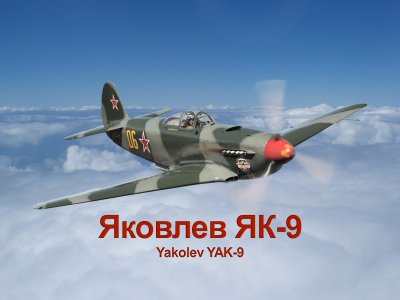The Yakovlev Yak-9 was a single-engine, single-seat multipurpose fighter aircraft from development of the robust and successful Yak-7B fighter, which was based in turn on the tandem-seat advanced trainer known as the Yak-7UTI. The Yak-9 started arriving in Soviet fighter regiments in late 1942 and played a major role in retaking air superiority from the Luftwaffe's new Focke-Wulf Fw 190 and Messerschmitt Bf 109G fighters during the grand Battle of Kursk in summer 1943. It went on to fight in the Korean War for the North Korean United Air Army in the first year of the war.
Development
The design prototype, the I-26, suffered technical issues with subassemblies provided by different suppliers raised the I-26-2's weight 400 kg (882 lb) above projected figures, which restricted the airframe to only 4.4 G while overheating oil was still a problem. The many defects caused I-26-2 to fail government testing in 1940. Fortunately for Yakovlev, its competitors I-200 (future Mikoyan-Gurevich MiG-3) and I-301 (future LaGG-3) also failed testing. Requested improvements were incorporated into I-26-3 which was delivered for testing on 13 October 1940. Although it passed on 9 December 1940, the aircraft was still very much unfinished with unresolved engine problems. Troublesome and slow testing and development must have been quite worrisome for Soviet officials considering the fact that the I-26 was ordered into production under the name 'Yak-1' on 19 February 1940, a mere month after I-26-1 made its maiden flight. Further development led to the Yak-7, then on to the Yak-9 which became the most prolific fighter in the Soviet Air Force. The Yak-9 fighter was first a production version of the lightened Yak-7DI, taking full advantage of the combat experience with its predecessor. Greater availability of duralumin allowed for lighter construction which in turn permitted a number of modifications to the basic design. The Yak-9 carried two different wings, five different engines, six different fuel tank combinations and seven types of armament configurations. In December 1943, it became possible to install the more powerful M-107 engine on a new Yak-9U airframe: the engine mounting was new with individual faired exhaust pipes; fuselage structure and wings were made of metal and the whole aircraft was covered with a Bakelite skin.
Back to Top
Yak-9
The Yak-9 was essentially a lighter development of the Yak-7 with the same armament and arrived at the front at the end of 1942. The Yak-9 had a lowered rear fuselage decking and all-around vision canopy. Its lighter airframe gave the new fighter a flexibility that previous models had lacked. The pilots who flew it regarded its performance as comparable to or better than that of the Messerschmitt Me109G and Focke-Wulf Fw190A-3/A-4. The Yak-9 was the most mass-produced Soviet fighter of all time. It remained in production from between October 1942 till December 1948 with 16,769 built (14,579 during the war). The Yak-9 was the first Soviet aircraft claimed to have shot down a Messerschmitt Me 262.
Back to Top
Post War
During 1949, the Soviet Union provided surplus Yak-9P (VK-107) aircraft to some satellite states in the Soviet bloc in order to help them rebuild their air forces in the wake of the West Berlin blockade. It also saw action in Korea with the initial attacks in 1950 where they were used to attack South Korean airfields. A Yak-11 was the first North Korean aircraft shot down by US forces when it was shot down by a North American F-82 Twin Mustang over Kimpo Airfield on 27 June 1950.
If all the Yaks variants were considered as one type, the 37,000 of all variants built would constitute the most produced fighter in history, roughly equal to the best known Soviet ground attack type of World War II, the II-2 'Shturmovik'. But losses were proportionally high, in fact the highest of all fighter types in service in USSR during the Great Patriotic War.
Back to Top



